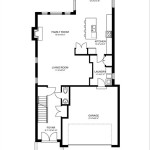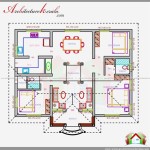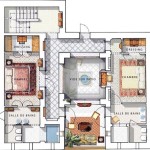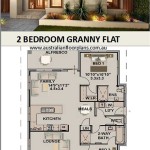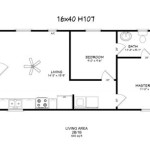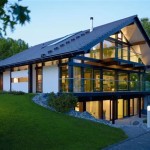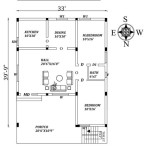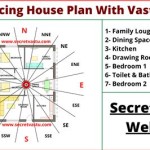Contemporary Inverted House Plans: Exploring Free Resources and Design Considerations
The concept of an inverted house plan, also known as an upside-down house, has gained considerable traction in contemporary residential architecture. This design approach involves placing the main living areas, such as the kitchen, living room, and often the master bedroom, on the upper floors of the house, while bedrooms and other secondary spaces are situated on the lower levels. This arrangement often capitalizes on views, maximizes natural light, and enhances privacy for living spaces. Accessing free resources for contemporary inverted house plans requires a strategic approach and an understanding of the design principles involved.
The primary motivation behind adopting inverted house plans stems from maximizing the advantages of a specific building site. For properties with desirable views at higher elevations, such as those overlooking a lake, mountains, or cityscapes, positioning the primary living spaces on the upper floors allows residents to fully appreciate the vista. In addition, if the property is located in a densely populated area, raising the living spaces can provide a greater sense of privacy and separation from street-level noise and activity.
Another factor influencing the rise in popularity of inverted house plans is the desire for enhanced natural light penetration. By positioning the main living areas on the upper floors, where they are less likely to be obstructed by surrounding buildings or landscape features, these spaces can receive more direct sunlight throughout the day. This can lead to reduced reliance on artificial lighting, contributing to energy savings and a more pleasant indoor environment.
Finding free resources for contemporary inverted house plans requires a methodical search and careful evaluation of the available options. While complete, ready-to-build blueprints are rarely offered for free, several valuable resources can provide inspiration, design ideas, and potentially, preliminary architectural sketches. These resources include online architectural databases, manufacturers' websites, and educational platforms.
Online architectural databases, such as those maintained by architectural firms or design publications, often feature galleries of completed projects, including inverted house designs. While these galleries may not provide detailed blueprints, they can offer a wealth of visual inspiration and help homeowners visualize the possibilities for their own homes. These images can be used as a starting point for discussions with architects or designers.
Manufacturers of building materials, such as windows, roofing, and siding, often have websites that showcase homes featuring their products. These websites may include basic floor plans or architectural renderings, which can provide valuable insights into the overall design of an inverted house. While these plans are typically not comprehensive, they can serve as a springboard for further exploration and customization.
Educational platforms, such as university architecture departments or online learning platforms, may offer introductory courses or resources on residential design. These resources can provide a foundational understanding of architectural principles and design considerations, which can be helpful when evaluating existing floor plans or developing custom designs. Free access to introductory materials is often available.
Key Point 1: Utilizing Online Resources for Initial Design Inspiration
The internet provides a vast array of visual resources that can serve as inspiration for contemporary inverted house plans. Websites such as Pinterest, Houzz, and ArchDaily are excellent starting points for gathering ideas and understanding different design styles. These platforms showcase photographs and renderings of various inverted house designs, allowing users to explore diverse architectural approaches and identify elements that resonate with their personal preferences. Furthermore, many architectural firms and designers maintain online portfolios that highlight their work, providing further insight into the possibilities of inverted house design.
When using these platforms, it is important to focus on specific features that are relevant to the project's goals. For example, if the primary objective is to maximize views, search for inverted house designs that feature large windows, balconies, or rooftop terraces. If energy efficiency is a concern, look for designs that incorporate passive solar heating and cooling strategies, such as overhangs and strategically placed windows. By focusing on specific design elements, it is possible to narrow down the vast amount of information available and identify designs that are truly relevant to the project's needs.
It is also important to critically evaluate the designs found online. Not all designs are created equal, and some may be poorly conceived or impractical. Consider factors such as the functionality of the floor plan, the relationship between indoor and outdoor spaces, and the overall aesthetic appeal of the design. If a design seems appealing on the surface, take the time to research the architect or designer to ensure that they have a proven track record of success.
Another valuable resource for design inspiration is architectural magazines and books. These publications often feature in-depth articles and photographs of innovative home designs, including inverted houses. While these publications may not be freely available online, they can be found at libraries or bookstores. By browsing through architectural magazines and books, it is possible to gain a deeper understanding of the design principles that underpin successful inverted house designs.
Key Point 2: Understanding Structural and Engineering Considerations
Inverted house plans present unique structural and engineering challenges that must be carefully addressed. The placement of the main living areas on the upper floors can result in a higher center of gravity, which can affect the stability of the house. Furthermore, the need to support the weight of the upper floors on a relatively small footprint can require specialized structural engineering solutions.
One of the primary structural considerations is the design of the foundation. The foundation must be strong enough to support the entire weight of the house, including the upper floors, which typically contain the heaviest appliances and furniture. In some cases, it may be necessary to use deep foundations, such as piles or piers, to transfer the load to stable soil or bedrock. The foundation design must also take into account local soil conditions and seismic activity.
The walls and columns that support the upper floors must also be carefully engineered to withstand the additional load. Reinforced concrete or steel framing is often used to provide the necessary strength and stability. The design of the walls and columns must also consider the potential for wind and seismic forces.
Another important engineering consideration is the design of the staircase. In an inverted house, the staircase is a critical element that connects the upper and lower floors. The staircase must be designed to be safe, comfortable, and aesthetically pleasing. The design must also comply with local building codes, which may specify requirements for tread depth, riser height, and handrail height.
The plumbing and electrical systems must also be carefully planned in an inverted house. The location of the main living areas on the upper floors can create challenges for routing pipes and wires. It is important to work with experienced plumbers and electricians to ensure that the systems are properly installed and that they comply with local building codes.
Key Point 3: Adapting Stock Plans and Utilizing Design Software
While completely free, ready-to-build contemporary inverted house plans are rare, adapting existing stock plans can be a viable option. Many online retailers offer stock house plans that can be modified to incorporate inverted design principles. This approach can potentially save time and money compared to developing a custom design from scratch. However, it is crucial to carefully assess the suitability of the stock plan and ensure that the necessary structural modifications can be made safely and cost-effectively.
Before adapting a stock plan, it is essential to consult with a qualified architect or structural engineer. They can evaluate the existing plan and determine whether it is feasible to invert the layout without compromising the structural integrity of the house. They can also advise on the necessary modifications, such as strengthening the foundation and walls, and ensuring that the plumbing and electrical systems are properly configured.
Design software can be a valuable tool for visualizing and modifying stock plans. Several user-friendly software programs are available that allow homeowners to create 3D models of their homes and experiment with different layouts and design options. These programs can also be used to estimate the cost of materials and labor, which can help homeowners stay within their budget.
When using design software, it is important to have a clear understanding of the project's goals and constraints. Define the desired layout of the upper and lower floors, the size and location of windows and doors, and the overall aesthetic style of the house. Also, consider the limitations of the software and the need for professional assistance with structural engineering and building code compliance.
Even with the aid of design software, adapting a stock plan requires careful planning and attention to detail. It is essential to involve qualified professionals at every stage of the process to ensure that the final design is safe, functional, and aesthetically pleasing. The initial cost savings of adapting a stock plan can be quickly eroded if significant design flaws emerge during construction. Professional input can help mitigate these risks.
Ultimately, finding and utilizing free resources for contemporary inverted house plans involves a combination of online research, critical evaluation, and consultation with qualified professionals. While complete blueprints may be elusive, the inspiration, design ideas, and preliminary sketches obtained from these resources can significantly inform the design process and contribute to the creation of a unique and functional inverted house.

4 Bedroom Modern Style House Plan 4286 The Prestige

The Prestige 4 Bedroom Modern Style House Plan 4286

The Esteem Exclusive Contemporary Style House Plan 4287

Plan 75977 Modern Style House Floor With Covered Lanai

Contemporary House Plan With 3 Bedrooms And 2 5 Baths 3724

Comfortable 1 Bedroom House Plan With Rear Garage And Deck Space

Ardross Floor Plan For Narrow Lot Home Design

Plan 75977 Modern Style House Floor With Covered Lanai

Plan Ek 1277 2 3 Two Story Bed Modern House With Split Bedrooms

Reverse Free Design 3d House Ideas By Planner 5d

